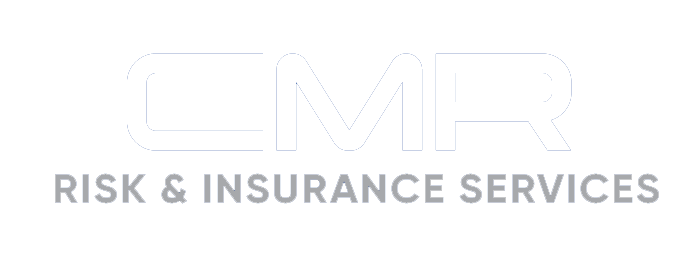Navigating Cybersecurity Challenges in the Manufacturing Industry

The manufacturing sector has experienced rapid technological advancements over the past few years. Innovations like artificial intelligence (AI), smart machinery, equipment monitoring software, digital sales systems and analytics platforms continue to reshape the industry.
Although the technological advancements provide several benefits, they also present additional cybersecurity exposures. They expand the attack surface for cyberthreats, and resulting cyberattacks can potentially cause significant disruptions, reputational damage and financial losses.
Robust cybersecurity measures are essential to protect sensitive data and ensure business continuity. Manufacturing business leaders should take proactive steps to safeguard their operations, finances and reputations. This article examines why cybercriminals target manufacturers, explores common types of cyberattacks and offers tips for cybersecurity best practices. It also discusses the role of cyber insurance in mitigating risk.
Why Cybercriminals Target Manufacturers
Cybercriminals often look to industries they can exploit. There are several reasons cybercriminals target manufacturers, including:
- Valuable intellectual property—Manufacturers possess numerous proprietary designs, valuable trade secrets and innovative processes that are attractive targets for cyber espionage.
- Operational disruption potential—Manufacturing businesses play an integral part in many global supply chains, and interrupting manufacturing processes can lead to significant financial losses and severe reputational damage. These factors make manufacturing companies appealing targets for ransomware attacks, as malicious actors may believe these organizations are more likely to pay ransom to restore operations despite recommendations against doing so.
- Supply chain interconnectedness—Manufacturers are involved in complex supply chains; compromising one link could create an entry point to several other entities within the chain.
- Perceived weaker security—Some manufacturers may prioritize production efficiency over cybersecurity. Cybercriminals may look to exploit those weaknesses.
- Expanded attack surface—The adoption of IoT devices, cloud-based systems and interconnected machinery increases the attack area and entry points for cybercriminals, making manufacturers more vulnerable to attacks.
Common Types of Cyberattacks
While cybercriminals have many methods of infiltration, certain types of cyberattacks are common in the manufacturing industry. Each of the following attacks has a different purpose and impact:
- Ransomware attacks—These are a prevalent attack type within the manufacturing industry. They occur when a hacker installs malicious software that encrypts an organization’s critical data and informs the company leaders that they will not release the data until a payment is made. Ransomware attacks are utilized for quick financial gain and to disrupt operations. If an organization falls victim to such an attack, it may experience severe business interruptions, reputational harm and financial losses.
- Industrial espionage—This scheme occurs when a malicious actor gains access to sensitive data and intellectual property, which is then stolen, sold or leveraged for competitive advantage. A company could lose market share and its competitive edge if this occurs.
- Supply chain attacks—Cybercriminals can infiltrate multiple organizations through a single weak point in a supply chain. Supply chain attacks take advantage of the interconnectedness of an extended supply network. This type of attack can have a cascading effect across multiple organizations, potentially disrupting the entire supply chain.
- Insider threats—Individuals with authorization to enter an organization’s network or data—including current or former employees, contractors and business partners—can intentionally or accidentally steal sensitive information, sabotage systems or facilitate internal attacks. Due to their insider knowledge and access, these threats can result in severe financial, reputational and operational consequences.
Cybersecurity Best Practices
To help combat cybersecurity risks, manufacturing business leaders should bolster their digital defenses. In particular, these companies should consider the following best practices:
- Adopt zero-trust architecture.Business leaders should assume that any user or device could be an entry point for a breach. Defaulting to a “never trust, always verify” principle and implementing strict role-based access controls and least-privilege principles can help safeguard information by only allowing users access to the information needed to do their jobs.
- Implement multifactor authentication (MFA) and encryption. MFA, which requires users to provide at least two verification factors to access data, should be enforced for all employees, especially for entry into critical systems. Sensitive data, including intellectual property and design files, should be encrypted so cyber intruders cannot easily decipher it.
- Bolster supply chain cybersecurity. A hacker can gain access to a manufacturer’s network through a weak link in the supply chain. Business leaders should only partner with third-party vendors and suppliers with strict cybersecurity protocols and continue monitoring their security postures. Including cybersecurity requirement clauses in vendor contracts can also mitigate risks.
- Conduct regular security audits and vulnerability assessments. Schedule routine cybersecurity audits with penetration testing to find weak points in networks and systems before they are exploited. Businesses should establish response plans to address any vulnerabilities found.
- Vet employees and provide robust cybersecurity training. Employees should undergo a background check before they are hired. Once on the job, they should receive regular training on cybersecurity best practices. This fosters a culture of security, encouraging employees to report suspicious activity and minimize human error.
- Store backup data. Saving three copies of error-free data on two types of media, with one copy off-site and one copy offline or air-gapped, can help ensure business continuity if a cyberattack, such as a ransomware attack, occurs.
- Utilize technology and patch software. Installing advanced antivirus and malware protection software and using patch management systems to ensure software updates can help prevent malware from infecting systems. Technologies such as AI and machine learning can also be leveraged to detect unusual activity within a system.
- Segment networks and have a cyber incident response plan. Keeping networks segmented can limit malicious actors’ access to sensitive information by restricting their lateral movement within the network. Having a cyber incident response plan in place can further address cyber risk by helping an organization respond effectively to an attack while minimizing its impact.
Role of Cyber Insurance in Mitigating Risk
Even with robust cybersecurity measures, cyber incidents can still occur. Cyber insurance can help mitigate a business’s exposure to cyber-related damages by covering losses arising from cybersecurity incidents. It can also provide financial assistance for data recovery, legal liabilities and business interruptions resulting from a cyberattack. Importantly, cyber insurance complements rather than replaces strong cybersecurity practices.
Many cyber insurance policies provide access to a vendor panel with legal counsel, public relations firms, IT specialists and other experts who are experienced in managing cyber incidents. This can help manufacturing businesses respond quickly and effectively to reduce the impact on their finances, reputations and operations. These experts can also assist in navigating the complex and evolving regulatory landscape.
Cyber insurance policies vary in coverage, limits and exclusions. Consulting a licensed insurance professional can help businesses choose the right policy to meet their needs.
Conclusion
Manufacturing businesses encounter several cyber risks due to the nature of their operations and the information they store and process. Implementing strong cybersecurity protocols and securing a cyber insurance policy can help these companies’ leaders address these exposures and safeguard their business’s data, finances and reputations.
Contact us today for more information.
Article Published By: Zywave, Inc.
